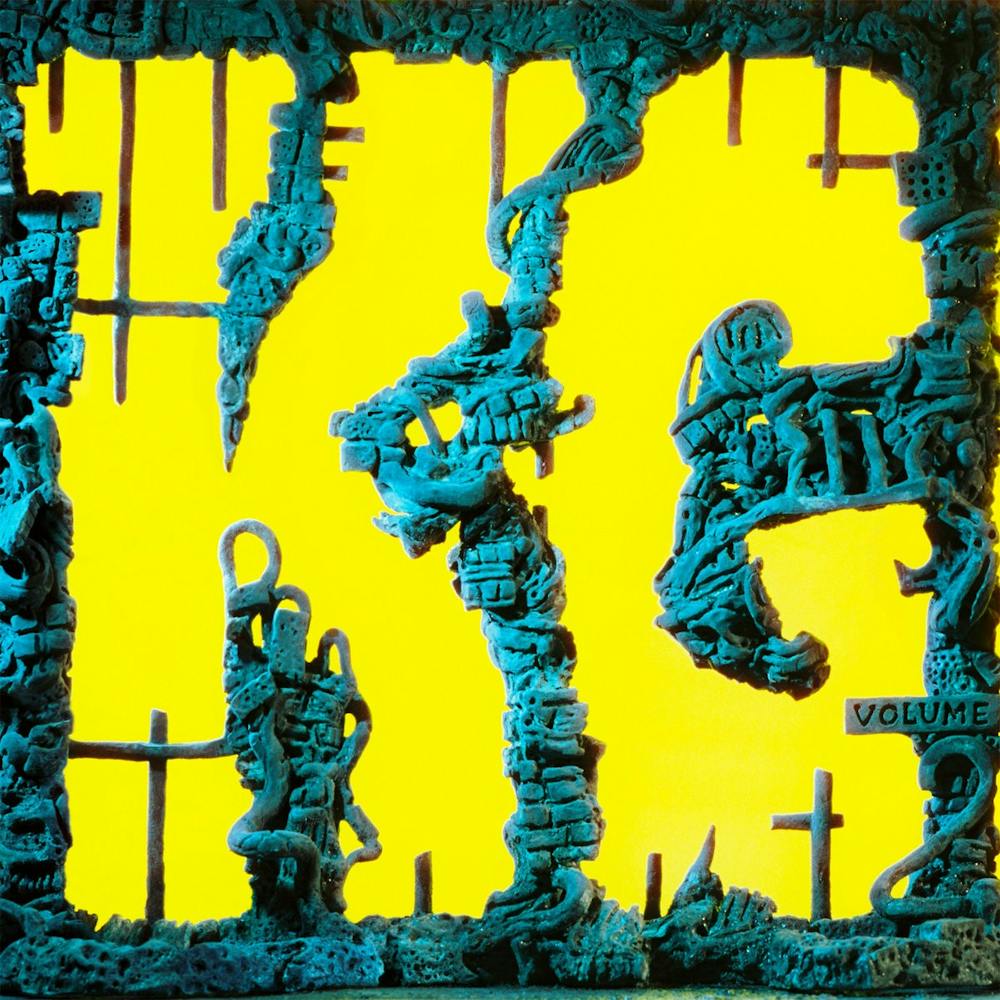Artist: King Gizzard & the Lizard Wizard
Album: KG
Label: Flightless Records
Release Date: Nov. 19
Rating: 9/10
Have you ever wondered what it would sound like if Bollywood movies were soundtracked by heavy metal?
In the sixteenth studio album from aussie-psych-rock outfit King Gizzard and the Lizard Wizard, this question is answered.
This album was conceived entirely during the pandemic after canceling their North American tour last spring due to COVID-19. They also recently lost one of their two drummers, Eric Moore, as he needed to focus more on their label and managing the band.
Yet, through these obstacles, King Gizz manages to create one of their best albums to date.
The first track, “K.G.L.W.,” is an instrumental introduction to many of the tones and techniques that are used throughout the rest of the project. Primarily, microtonal scales, which are most often found in eastern music and feature notes in between notes. This is King Gizz’s second exploration into microtonal tuning, the first being their 2017 release, “Flying Microtonal Banana.” Jason Galea, the visual artist that does just about everything for King Gizz, sneaked in a “Volume 1” in FMB’s cover art and a “Volume 2” in KG’s cover.
As “K.G.L.W.” finishes up, with a pallet of wind instruments backed by guitar, bass and drums, the song flows right into the next, “Automation.” The fourth and final single to come before the release of the album discusses our technological overlords. There is no official music video for the song, but the band released a bunch of footage on their website for fans to download and make their own. Clips of band members covered in tinfoil and slathered in metallic sharpie were patched together by fans and flooded the band’s subreddit.
“Minimum Brain Size” starts with studded synths popping into a staticky guitar. Then an interesting contrast between acoustic and primal drums are complemented by extra terrestrial sounding synthesizers. A harmonica moans in the background as the lyrics focus on fools that have doomed themselves.
“Straws In The Wind” is a fun bluesy song about the end of the world happening right before our eyes. A soft guitar riff backs organist and harmonica player Ambrose Kenny-Smith’s raspy vocals. The songs picks up in certain parts and a twangy guitar solo sounds great over bright drums and horse hooves.
Most of King Gizzard & the Lizard Wizard’s lyricism is up to debate. You are more than welcome to take it at a more literal sense, in that there is much social commentary against most of the events occurring in our world today, or you can delve into the overarching storyline between albums fans have deemed the “Gizzverse.” Other than the fact it exists, the Gizzverse is entirely speculation, but superfans have dedicated endless time to deciphering. In the Gizzverse, the world as we know melts away due to ecological disasters, the Lord of Lightning battles the legendary Balrog, and a cyborg named Han-Tyumi, an anagram for humanity, destroys the universe by vomiting infinitely.
“Some Of Us” comes in strong with a distorted surf-rock riff shot through a wah pedal, a tone filter musicians can control with their feet. The outro is one of the highlights of the album, using a keyboard straight out of Stevie Wonder’s closet, yet they still put their unique tone on it.
“Ontology” is arguably the best song on the album, bringing sharp keys and searing guitar into an up-tempo bizarre sound. Crashing cymbals, thudding toms, and a funky bass line drive the song.
Wispy vocals question the state of our reality with lines like, “Why is there anyone? Why do we think?/What is the point of it? Why anything?” The second section features screeching guitars, blasting drums, and a lively bassline. The two simultaneous crunchy guitar solos are amazing.
Then, “Intrasport,” which has already become a fan favorite, sounds almost like a club mix, but still uses eastern scales producing an oddity to behold. Guitarist Joey Walker, also known as Bullant, has made weird electronic music like this before, and undoubtedly had a major influence in the production of this song.
“Honey” was the first single released before the album was even announced, and still holds up as a highlight of the album. An acoustic riff falls into a wicked bassline with oddly lovely lyrics. Yet, the Gizzverse says the door to hell is amber, so this may be a valentine to Satan. The second section uses microtonal harmonies with different wind instruments and a harp to create an interesting ensemble. A heavy bassline creates a contrast between the light focal instrumentation. The end of the song has only the lead singer and his guitar and the music video, shot at the very beginning of quarantine, shows him sitting alone in an urban area of Melbourne.
The massive finale, “The Hungry Wolf of Fate,” blasts to life with roaring gritty guitars and drops into sparse harmonies and wispy vocals and a rumbling bassline. Shots of buzzsaw guitar and feedback with a tone unique to King Gizz is incredible. Harmonic plucks of guitar and a single electric jams until the toms grow into a drum line and back into the main riff. Final fuzz rings out, wind blows and the album cuts out.
The diversity of instrumentation and genres found in this album are wonderful and the lyricism continues to blow fans away. The tones are both experimental, but still stick to the roots of what the band has always been.
With their second attempt at utilizing eastern microtonal scales, King Gizzard and the Lizard Wizard have shown they will continue to outdo themselves, even as they approach 20 albums in their discography.
The arts desk can be reached at arts@ubspectrum.com





